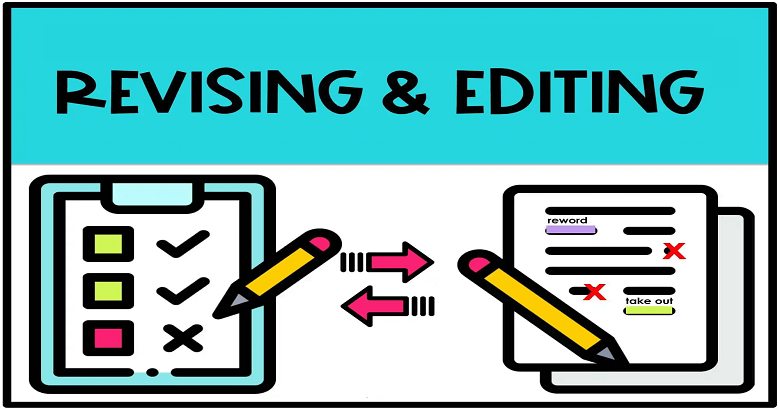Publishing a book as a teenager may seem daunting, but it’s entirely achievable with the right guidance and determination. This guide will walk you through each process step, from writing your manuscript to marketing your book. Whether interested in fiction, nonfiction, or poetry, these steps will help you realize your literary dreams.
1. Finding Your Inspiration
Identifying Your Passion
The first step to writing a book is finding a topic or story that excites you. Think about your interests, experiences, and the types of books you enjoy reading. Are you passionate about fantasy, science fiction, romance, or real-life stories? Choosing a topic you love will keep you motivated throughout the writing process.
Brainstorming Ideas
Once you have a general idea of what you want to write about, brainstorm. Write down all your ideas, no matter how big or small. This will help you organize your thoughts and identify the best direction for your book. Consider creating an outline to structure your ideas and ensure your story has a clear beginning, middle, and end.
2. Writing Your Manuscript
Setting Realistic Goals
Writing a book is a significant undertaking, so setting realistic goals is essential. Determine how much time you can dedicate to writing each day or week and set achievable word count targets. Consistency is vital; breaking the task into smaller, manageable parts will make it less overwhelming.
Developing Your Writing Skills
As a young writer, you may still be developing your writing skills. Don’t be discouraged; everyone starts somewhere. Consider taking a writing class, joining a writing group, or seeking feedback from teachers, friends, or family. Reading widely in your chosen genre can help you understand different writing styles and improve your own.
Writing the First Draft
Begin writing your first draft without worrying too much about perfection. The goal is to get your ideas down on paper. You can always revise and improve your work later. Remember, even the most successful authors go through multiple drafts before their book is ready for publication.
3. Revising and Editing
Self-Editing
Once you’ve completed your first draft, take a break before starting the revision process. This will give you a fresh perspective on your work. Begin by reading through your manuscript and noting areas that need improvement. Look for plot holes, inconsistencies, and places where you can enhance character development or dialogue.
Seeking Feedback
Sharing your manuscript with others can provide valuable insights. Ask trusted friends, family members, or teachers to read your work and provide constructive feedback. You can also join online writing communities or local writing groups to connect with other young writers and exchange critiques.
Professional Editing
If possible, consider hiring a professional editor to review your manuscript. While this may not be financially feasible for all teenagers, some editors offer discounted rates for young writers or are willing to work on a sliding scale. A professional editor can help polish your writing and ensure your book is ready for publication.
4. Understanding the Publishing Options
Traditional Publishing
Traditional publishing involves submitting your manuscript to literary agents or publishers. If accepted, the publisher will handle your book’s editing, designing, printing, and distribution. This route can be competitive, especially for new and young authors, but it offers the advantage of professional support and broader distribution.
Self-Publishing
Self-publishing gives you complete control over the publishing process. You’ll be responsible for editing, designing, and marketing your book but also keep a larger share of the profits. Platforms like Amazon’s Kindle Direct Publishing (KDP), IngramSpark, and Lulu make self-publishing print and digital books easy.
Hybrid Publishing
Hybrid publishing combines elements of traditional and self-publishing. Authors typically pay for some publishing services, such as editing or marketing, while the publisher handles distribution. This option can be an excellent middle ground for young authors who want professional support but are willing to invest in their projects.
5. Preparing Your Manuscript for Publication
Formatting
Proper formatting is crucial for a professional-looking book. Each publishing platform has specific formatting guidelines, so review these before submitting your manuscript. Standard formatting requirements include font type and size, margins, and spacing. Tools like Microsoft Word, Scrivener, and specialized book formatting software can help you format your manuscript correctly.
Designing a Cover
Your book cover is the first thing potential readers will see, so making a good impression is essential. You can create your cover using tools like Canva or Adobe Illustrator if you have graphic design skills. Alternatively, consider hiring a professional designer. Some self-publishing platforms offer cover design services, or you can find freelance designers on websites like Fiverr or Upwork.
Writing a Book Blurb
A compelling book blurb is essential for attracting readers. Your blurb should provide a brief overview of your book’s plot and main characters while enticing readers to want to know more. It’s often helpful to read blurbs from other books in your genre to understand what works well.
6. Publishing Your Book
Choosing a Publishing Platform
Select the publishing platform that best suits your needs and budget. Popular options for self-publishing include Amazon KDP, IngramSpark, and Lulu. Each platform has its own set of requirements and fees, so be sure to review these carefully.
Uploading Your Manuscript
Follow the instructions provided by your chosen publishing platform to upload your manuscript and cover. Double-check all formatting and design elements to ensure everything looks professional. Most platforms allow you to preview your book before finalizing the publication.
Setting the Price
Decide on a price for your book. Research similar books in your genre to see what other authors are charging. Remember that lower prices can attract more readers, while higher prices may generate more revenue per sale. Many platforms offer pricing tools to help you find the right balance.
7. Marketing Your Book
Building an Online Presence
Creating an online presence is crucial for marketing your book. Start by setting up social media profiles on Instagram, Twitter, and Facebook. Share updates about your writing process, behind-the-scenes looks, and engaging content related to your book’s theme.
Creating a Website or Blog
A website or blog can serve as a central hub for your book and other writing projects. Use it to share information about your book, post updates, and connect with readers. Platforms like WordPress and Wix offer easy-to-use website builders.
Engaging with Readers
Building a relationship with your readers can help boost your book’s success. Respond to comments and messages on social media, participate in online writing communities, and consider hosting virtual events like Q&A sessions or book readings.
Utilizing Book Promotion Services
Consider using book promotion services to reach a wider audience. Websites like BookBub, Goodreads, and NetGalley offer promotional opportunities for authors. While some services charge a fee, they can help you reach more potential readers.
8. Overcoming Challenges
Dealing with Rejection
Rejection is a part of the publishing process, even for experienced authors. Don’t be discouraged if you receive a rejection from a literary agent or publisher. Use the feedback to improve your manuscript and submit it to other agents or publishers.
Managing Time
Balancing writing with school, extracurricular activities and other commitments can be challenging. Create a schedule that allows you to dedicate regular time to your writing without sacrificing your other responsibilities. Prioritize tasks and stay organized to manage your time effectively.
Staying Motivated
Writing a book is a long and sometimes difficult journey. Stay motivated by setting small, achievable goals, celebrating your progress, and reminding yourself why you started writing in the first place. Surround yourself with supportive friends and family who can encourage you.
Conclusion
Publishing a book as a teenager is an impressive and rewarding accomplishment. By following these steps and staying committed to your goal, you can make your dream of becoming a published author a reality. Remember, every great author started somewhere, and with passion, perseverance, and a little guidance, you can achieve your writing aspirations. Good luck!
Frequently Asked Questions
1. Is self-publishing or traditional publishing better for teenage authors?
Both options have pros and cons. Self-publishing offers more control but requires more self-promotion. Traditional publishing provides professional support but can be harder to break into. Consider your goals and resources before deciding.
2. Do I need a finished manuscript before querying agents or publishers?
For fiction, most agents and publishers require a completed manuscript. Non-fiction may be accepted with a proposal and sample chapters. However, always check submission guidelines, as they can vary.
3. How can I protect my work from plagiarism as a teenage author?
Once your work is created and fixed in tangible form, you automatically have copyright protection. However, registering your copyright with the U.S. Copyright Office provides additional legal protection. Consider including a copyright notice in your book.
4. Are there any writing competitions or grants specifically for teenage authors?
Yes, there are several writing contests and grants aimed at young writers. Organizations like the Scholastic Art & Writing Awards and the YoungArts Foundation offer opportunities for recognition and support.
5. What marketing strategies effectively promote a book as a teenager?
Share updates about your book on social media platforms that are popular with your peers. Engage with online book communities and consider contacting local bookstores or libraries for events. Don’t underestimate the power of word-of-mouth from friends and family.





